0 Introduction
Wind power has attracted considerable attention as an accessible and widely distributed form of clean energy.With the increase in low-carbon awareness, wind power generation is expected to account for an increasing proportion of renewable energy power generation.The wind farms established in the early stage of wind power generation development were typically composed of a limited number and single type of small wind turbines; thus,the impact of the wind farm connected to the power grid could be ignored.With the progress of various technologies and the popularization of wind power utilization, large wind farms have been increasingly established throughout the world, such as the Alta Wind Energy Center in California,which is the largest wind farm in the world and has an installed capacity of 1020 MW.These large-scale wind farms provide the source power for low-carbon development but also necessitate strict requirements for ensuring the stability of power system in this region.
Researchers around the world have directed considerable effort toward ensuring the safe and stable operation of power systems with large proportions of wind power [2, 3].Owing to the small scale of early wind farms and the single type of wind turbines, to ensure that the wind turbines can be connected to the grid smoothly, it is necessary to establish an appropriate model on a simulation platform to simulate the operation characteristics and control methods of wind turbines [4-6].Manufacturers usually provide detailed models of wind turbines, but these models are protected by confidentiality agreements.Additionally,the use of such detailed models requires considerable computational resources, and the system flexibility is poor.Thus, there is an urgent need for a standard, effective,and publicly available “generic dynamic model” for wind turbines that can describe wind power equipment from different manufacturers through the selection of appropriate parameters [7].
The Western Electricity Coordinating Council (WECC)proposed the first-generation “generic dynamic model”for four different wind turbines in 2009 and implemented it on a commercial simulation platform [8].Subsequently the International Electrotechnical Commission (IEC)established the IEC TC88 WG27 working group to draft international standards based on the first-generation“general dynamic model” for standardizing the general model for wind turbines [7].In the following years, the shortcomings of the first-generation general dynamic model were gradually exposed, and it could not satisfy the realistic technical requirements [9,10].In 2011, the WECC, IEC, and North American Electric Reliability Council and enterprises worked together to launch the second-generation “general simulation model” at the end of 2013 [9].The second-generation model features improvements to some modules and the control strategy[7].Although it has limitations, the development of this model provides a reference for China to establish its own general dynamic model for wind turbines.
As the scale of wind farms continues to expand,the average number of wind turbines per wind farm is increasing, and the wind turbines are no longer limited to a single type, the method of simulating the dynamic characteristics of grid-connected wind farms by establishing detailed models of the wind farms requires considerable computational power, making it unable to satisfy the current research needs.For increasing the simulation speed and saving resources, convenient and accessible equivalence modeling of wind farms is necessary.The remainder of this paper is organized as follows.First, the modeling process for wind turbines is introduced.Then, the equivalence modeling of wind farms based on the dynamic model of wind turbines is presented, and the development process and research status of wind power-related standards at home and abroad are summarized.Finally, a comparative analysis of several wind power-related standards is presented.
1 Analysis of wind-turbine model
At present, the modeling methods for wind turbines mainly involve organic rational modeling and external characteristic modeling.Mechanism modeling of wind turbines is typically used for the fine analysis of wind turbine, such as the detailed study of a single wind turbine in a special scenario, and wind-turbine manufacturers often use this method for grid-connection tests.In the research on power systems, we usually focus on the external characteristics of wind turbines, and with the expansion of the scale of wind farms, the development of detailed models of all wind turbines for simulation is impractical.In contrast, the establishment of general models of wind turbines according to the external characteristics for relevant simulation research has led to a high simulation speed and reliable results.
1.1 Basic structure of wind-turbine model
The general wind-turbine model structure is shown in Fig.1, where the aerodynamic model is similar to the general model of the transmission chain in various wind turbines.The features of various wind turbines are the generator and converter system, protection module, control system, and other modules.
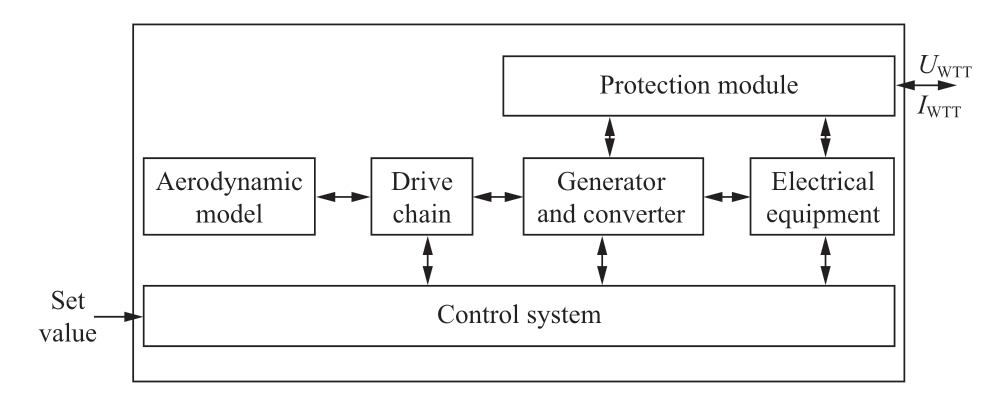
Fig.1 General wind-turbine model structure
In recent years, for different purposes, researchers have solved detailed problems using general models.Reference [12]established a robust wind farm dynamic equivalent model based on the benchmark system of the Western Power Coordination Committee for system stability analysis and control.Reference [13] proposed a method of using an electrically excited synchronous motor instead of a permanent magnet synchronous motor, which solves the problem of the lack of a permanent magnet synchronous motor model in some commercial software model libraries for power systems.Reference [6] validated two topologies for two currently used variable-speed wind turbines and established correlations between IEC generic models and specific wind-turbine manufacturer models.
The aerodynamic model simulates the acquisition of wind energy, and the obtained wind power can be expressed as follows [14]:
where ρ represents the air density, R represents the radius of the wind-turbine impeller, VW represents the wind speed,and CP is the wind energy conversion efficiency coefficient.
The drive chain consists of a wind-turbine rotor, lowspeed shaft, speed-increasing gearbox, high-speed shaft,and generator rotor.The most commonly used model for the transmission shaft is the two-mass flexible shafting model [14].

Here, Htur and Hgen are the inertia time constants (s)of the wind turbine and generator, respectively; Ks is the stiffness coefficient of the shaft (kg·m2/s2); Dtur and Dgen are the damping coefficients (Nm/rad) of the wind-turbine rotor and generator rotor, respectively; and Dtg is the damping coefficient between the wind turbine and the generator.
1.2 Models of mainstream wind turbines
The four most commonly used types of wind turbines are the fixed-speed wind turbine (type I), slip control variable-speed wind turbine (type Ⅱ), double-fed variablespeed wind turbine (type Ⅲ), and full-power variablefrequency wind turbine (type IV).Because the functions and technologies of the type III and IV wind turbines are more suitable for the development of power systems at this stage, these two types have gradually replaced type I and II wind turbines, and their application scope continues to expand.Therefore, this paper only introduces the general models of type III and IV wind turbines in detail.The special features of type III wind and IV wind turbines are the generator and converter system, protection module,and control system.
In general, the generator for type I, Ⅱ, and Ⅲ wind turbines is an induction motor, and the type IV wind turbine employs a permanent magnet synchronous machine(PMSM) [11]; thus, the generator model of the wind power generation system is divided into two parts: the induction motor model and PMSM model.This paper only presents relevant conclusions; the detailed derivations can be found in previous works [15-19].
(1) Induction machine model
The generator model for type I, II, and III wind turbines should reflect the transient characteristics of rotor flux linkage, and the transient characteristics of stator flux linkage can be ignored.The stator and rotor voltage equations and rotor flux equations for the induction machine model in d-q coordinates are as follows:
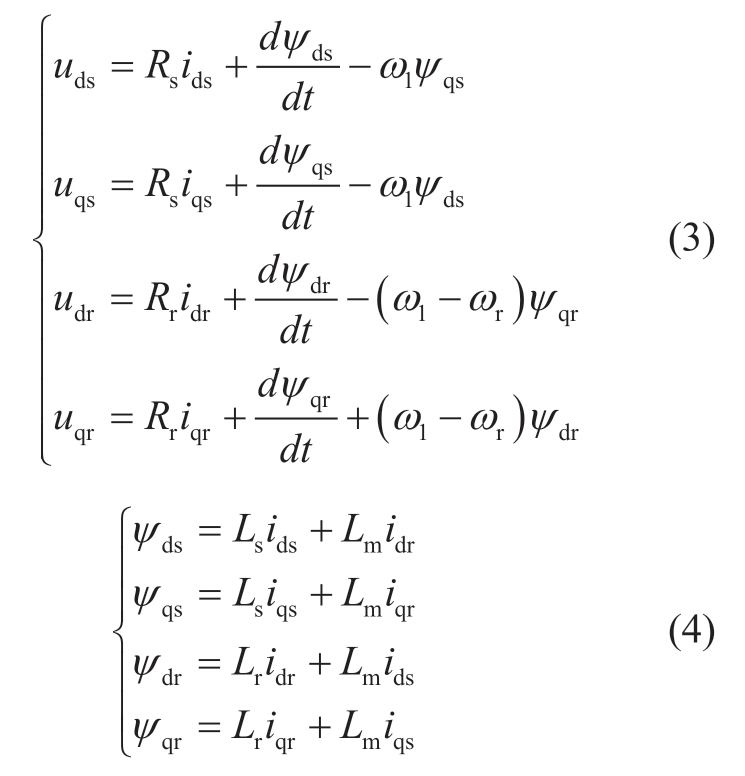
where the subscripts d and q denote the d-and q-axis components, respectively; the subscripts s and r denote the stator and rotor variables, respectively; Ls = Lm + Lls and Lr =Lm + Llr represent the equivalent self-inductances of the stator and rotor, respectively; Lm represents the mutual inductance between the stator and the rotor; Lls and Llr represent the leakage inductances of the stator and rotor,respectively; ω1 represents the synchronous angular velocity of the system; and ωr represents the angular velocity of the generator rotor.
The generator and converter of a type III wind turbine are composed of an ordinary wound asynchronous motor and a four-quadrant converter, and the control system is located between the rotor slip ring and the stator.The wind turbine exchanges slip power between power converters of the doubly fed wind turbine and the power grid, and the active power and reactive power of the whole doubly fed wind turbine are controlled by the converter.The control system of a type III wind turbine performs pitchangle control, generator-side converter control, and gridside converter control.Type III wind turbines are usually equipped with a crowbar protection circuit on the rotor side to achieve the low-voltage ride-through function.The purpose of the crowbar circuit is to protect the rotor from over-current.
(2) PMSM machine model
The mathematical model of the PMSM machine in d-q coordinates is given as follows [18]:

where Ud, Uq, Id, and Iq represent the stator voltage and current in d-q coordinates, Ld and Lq represent the equivalent inductance of the stator in d-q coordinates, and ωr and Ψr represent the rotational angular velocity and flux linkage,respectively, of the permanent magnet.
Type IV wind turbines have back-to-back full-power converters to isolate the generator from the grid.Therefore,when the control of the wind turbine, generator, and generator-side converter changes the generator-side power,the characteristics of wind-turbines are reflected in the dynamics of the direct-current (DC) capacitor voltage.Type IV wind turbines are generally equipped with a chopper protection circuit to prevent DC capacitor overvoltage, and if the impact of small fluctuations in the DC capacitor voltage is ignored, the grid-connection electrical characteristics of the type IV wind turbine are mainly determined by the gridside converter control system.Therefore, the model of the generator-side converter control system, generator, and wind-turbine components can be simplified, and the active and reactive power decoupling control of the wind turbine can be simulated by the net-side converter.
1.3 Standards for wind-turbine modeling
Establishing a general model for wind turbines is essential for ensuring that power systems with large proportions of wind power operate within the specified range.To ensure that such power systems remain within the normal operation range, it is necessary to determine the constraints on grid-connected wind turbines, that is, the standards formulated for relevant units.
1.3.1 Current situation
(1) Development of international wind-turbine standards
In recent years, the most widely used international wind-turbine standards have been “IEC 61400-21:2008 Measurement and assessment of power quality characteristic of grid connected wind turbines” (IEC 61400-21:2008) and“IEC 61400-27-1:2015 Wind turbines-Part 27-1:Electrical simulation models-Wind turbines” (IEC 61400-27-1:2015)[20, 21].
IEC 61400-27-1:2015 provides a detailed description of the process of establishing a generic dynamic model of wind turbines for power-system transient analysis and the model verification procedure, defines the minimum safety requirements for wind turbines, and provides a general model of wind turbines.With the development of technology, the working group published a revised version of the standard called “IEC 61400-27-1:2020 Electrical simulation models-Generic models,” supplementing the original version with a standard electrical simulation model for wind power plants [22].
IEC 61400-21:2008 focuses on the evaluation of the power quality of grid-connected wind turbines.It presents the definition and specifications of multiple indicators representing the mechanical and electrical energy quality of grid-connected wind turbines, a test procedure for quantifying the characteristics of grid-connected wind turbines, procedures for evaluating whether the power quality satisfies the requirements, etc.With the development of technology, the working group revised the standard and launched “IEC 61400-21-1:2019 Measurement and assessment of electrical characteristic-Wind turbines” [23].The new version added a frequency-control measurement procedure, inertial control response measurement, a highvoltage ride-through test procedure, a low-voltage ridethrough test procedure based on wind-turbine capability update, reactive power control and capability measurement,and a harmonic evaluation method.The test procedures and evaluation principles of IEC 61400-21-1:2019 provided the basis for IEC-61400-27, which provides detailed recommendations based on the requirements of IEC 61400-21 for power quality and establishes a general dynamic model for wind turbines and a model for wind farms.
(2) National
There are two main indicators to distinguish the standard service conditions and application scenarios of wind turbines: the model category and simulation method.
Wind-turbine models can be divided into two categories:detailed and general.As mentioned previously, detailed models are usually developed to analyze the internal characteristics of wind turbines, e.g., for evaluating the parameters of the wind turbines and verifying the reliability of other wind-turbine models.For analyzing problems from the viewpoint of the power system, an equivalent model of the wind turbine is typically built to study the external characteristics of the wind turbine and its interaction with the power system.Regarding the published windturbine standards in China, “NB/T 31053 Modeling and verification methods of wind turbine low voltage ride through characteristic” [24] (NB/T 31053) established a general model for wind turbines based on the low-voltage ride-through capability test of wind turbines and provided the process of modeling and model verification.“NB/T 31111 Test procedure of wind turbine high voltage ride through capability” [25] (NB/T 31111) established detailed models of wind turbines to aid research on the parameters, indices, and performance of wind turbines and provide basic support for determining the relevant indices for wind farms connected to the power grid.“NB/T 31066 Guidelines for electrical simulation models of wind turbines” (NB/T 31066) and “GB/T 36237 Wind turbines-Electrical simulation models” (GB/T 36237)established general dynamic models for wind turbines[14, 26].The model established in NB/T 31066 is used for power-system steady-state analysis, and the model established in GB/T 36237 is used for powersystem transient analysis.GB/T 36237 is based on the international standard IEC 61400-27-1:2015, together with China’s technical requirements for wind turbines.
The simulation methods can be divided into electromechanical transient simulation and electromagnetic transient simulation.The main difference between them is the simulation step size.The electromechanical transient simulation step size is typically on the order of milliseconds,whereas the electromagnetic transient simulation step size is typically on the order of microseconds.Thus, the appropriate standard should be selected according to the simulation requirements; for example, NB/T 31066 and NB/T 31053 are suitable for electromechanical transient simulations.
1.3.2 Deficiencies and future research
After years of development, the standards for windturbine modeling have been successfully utilized, but there are still deficiencies:
(1) Few of the existing standards specify whether the detailed model of wind turbine involved in the standard is a general model, and the application scenarios of the standards are not sufficiently detailed, resulting in readers’inability to grasp the key points.
(2) There are problems in modeling based on the external characteristics of the wind turbine.In the analysis of the power system, general modeling offers a trade off between accuracy and convenience.In the process of general-model verification, the accuracy must be strictly controlled.Additionally, the parameters of the same model can differ under different working conditions, which affects the accuracy of the model.If the model accuracy is reduced to ensure the consistency of parameters, simulation results cannot be obtained under some working conditions.Therefore, the model accuracy relative to the real scenario must be continuously improved.
2 Analysis of wind-farm model
In the early stage of wind power development, the scale of the wind farms was small, and only a single type of wind turbine was used.Therefore, establishing wind-turbine models and formulating the relevant standards for wind turbines was practical.With the development of wind power technology, the scale of wind farms and the types of wind turbines have increased significantly, making it impractical to study only wind turbines.Therefore, we must study the models and standards of wind farms.
2.1 Detailed model of wind farm
Detailed simulation models of wind farms are generally used to analyze the effects of wind turbines and convergence systems on the electrical characteristics of the wind-farm grid, e.g., for determining whether a new wind farm complies with the load requirements of GB/T 19963,according to changes in the electrical volume of the grid, the responses of the units, etc [27].
The general detailed structure of a wind farm is shown in Fig.2.It is mainly composed of a transformer, reactive power collection device, and wind power compensation system.The energy generated by the wind turbine is collected through the collection line and connected to the power grid through the step-up transformer.
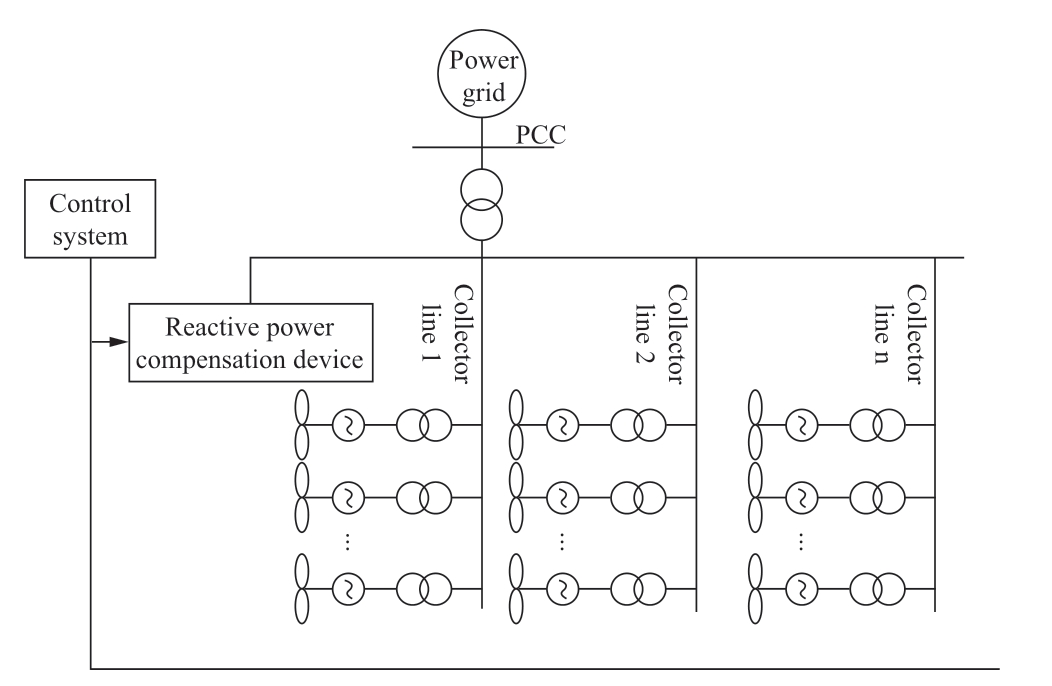
Fig.2 General detailed structure of a wind farm
The detailed wind-farm simulation model should be developed according to the actual electrical structure of the wind farm, including the wind turbines, wind-farm power pooling system, wind-farm protection system, and windfarm control system, and the electrical connection distance and wiring between the equipment should match the actual situation.However, because the scale of wind farms is increasing, the large amount of wind power connected to the power grid may be lead to a dimensional disaster of the simulated system [1, 2, 28].It is necessary to simplify the wind farm equivalently while ensuring that the influence of the wind farm on the transient characteristics of the power grid remains unchanged.
2.2 Equivalent model of wind farm
2.2.1 Equivalent aggregation method
The dynamic simplified equivalent model of a wind farm can usually be obtained via the aggregation method[29].This method is based on the detailed model of the wind farm [30].On the premise of retaining the transient characteristics of the wind farm, the detailed model of the wind turbine corresponds to one or several wind turbines,and its physical meaning is clear.
The aggregation methods for wind-farm equivalence modeling can be divided into single-machine equivalence and multi-machine equivalence [31, 32].According to the power-flow consistency of the equivalent model, an equivalent unit is used to represent the whole wind farm,and its output power is the total output power of all the fans.However, when the wind turbine is under extreme wind conditions or operating conditions, the number of units is large, and/or the network topology is complex, there may be significant changes in the equivalent dynamic characteristics of a single machine.
The multi-machine equivalent method divides the wind turbine into several clusters.According to the principle of weighted average, parallel parameters, or constant reactive power loss, the parameters of each equipment cluster and line are calculated, and a dynamic equivalent model of the wind farm is obtained.
2.2.2 Clustering
There are three main types of wind-turbine clustering[29, 33-35]:
(1) Based on the impedance distribution: The collection lines in the wind farm affect the voltage of each unit in the wind farm, thus affecting the reactive power characteristics during a fault.Long collection lines lead to significant differences in the electrical characteristics of the units.The units in the wind farm can be grouped according to the distance from the state.
(2) Based on the power distribution: After the fault is removed during the operation of the wind farm, the different power-recovery characteristics of the wind turbines lead to a transient over-voltage at the moment of fault recovery.Thus, the units in the wind farm can be grouped according to the power distribution.
(3) Based on the feeder structure: In the wind farm, the electrical connection and interaction between wind turbines are realized through the collection lines.If the collection lines are short and have similar electrical characteristics,they can be combined.
According to the clustering methods, the requirements for wind-turbine clustering are as follows:
(1) Because different types of wind turbines have different electrical characteristics, the wind turbines can be clustered according to their types.
(2) The different electrical distances between the wind-turbine terminals and states lead to different voltage distributions at different ports in the wind farm.Therefore,it is necessary to cluster according to the electrical distance.
(3) Because different initial operation states of windturbine units have different fault characteristics, it is necessary to cluster according to the operating conditions.
2.2.3 Parameter equivalence for clustering wind turbines
There are four parameter-equivalence methods for windturbine clustering [33, 34, 36, 37]:
(1) Capacity-weighting method
The wind-farm capacity-weighted single-machine equivalent method is often used for parameter equivalence in cases of wind farms with a single type of wind turbine.The application condition is that all the wind turbines in the wind farm are connected to the same bus through the outlet transformer, and the influence of the cable line is not considered.
If there are N wind turbines in the wind farm, δi is the capacity weighting coefficient:
where Si represents the capacity of the ith typhoon generator in the wind farm.
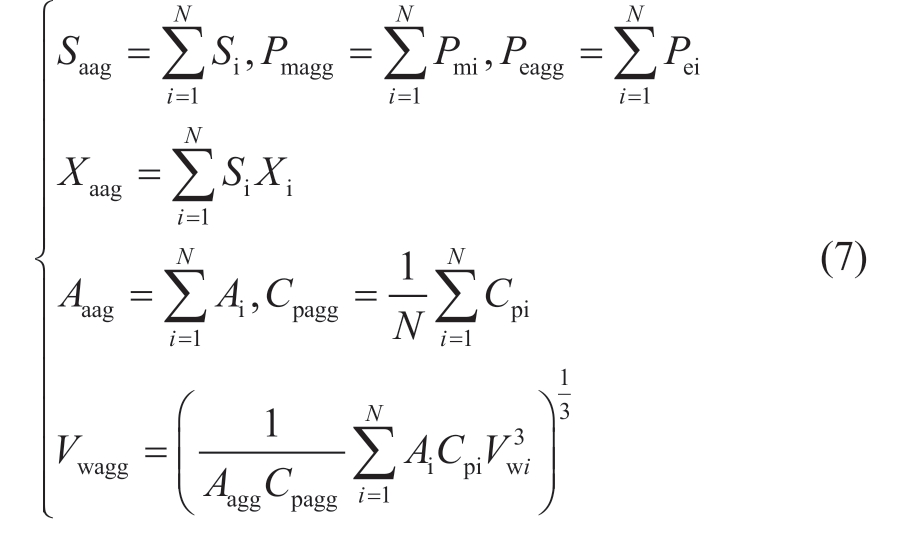
Here, Xi, Ai, Cpi, and Vwi represent the electrical parameters, swept area, wind energy utilization coefficient,and wind speed, respectively, of the ith wind turbine in the wind farm.Xagg represents the parameters of the equivalent machine of the ith wind turbine, and the subscript “agg”denotes the equivalent parameters of the wind farm.
The result of the capacity-weighting method is useful,but the premise is that all the wind turbines in the wind farm are connected to the same bus through the generatorside transformer, and it is considered that the differences in line impedance can be ignored, limiting the large-scale application of this method.
(2) Improved weighted single-machine equivalent method
In the improved weighted single-machine equivalent method, the capacity-weighting method is used to obtain the inertia time constant of the wind-farm equivalent model, and then the equivalent parameters are obtained according to the load of the asynchronous motor.Finally, the equivalent circuit and the capacity-weighting method are used to determine the impedance of the wind-farm equivalent model:
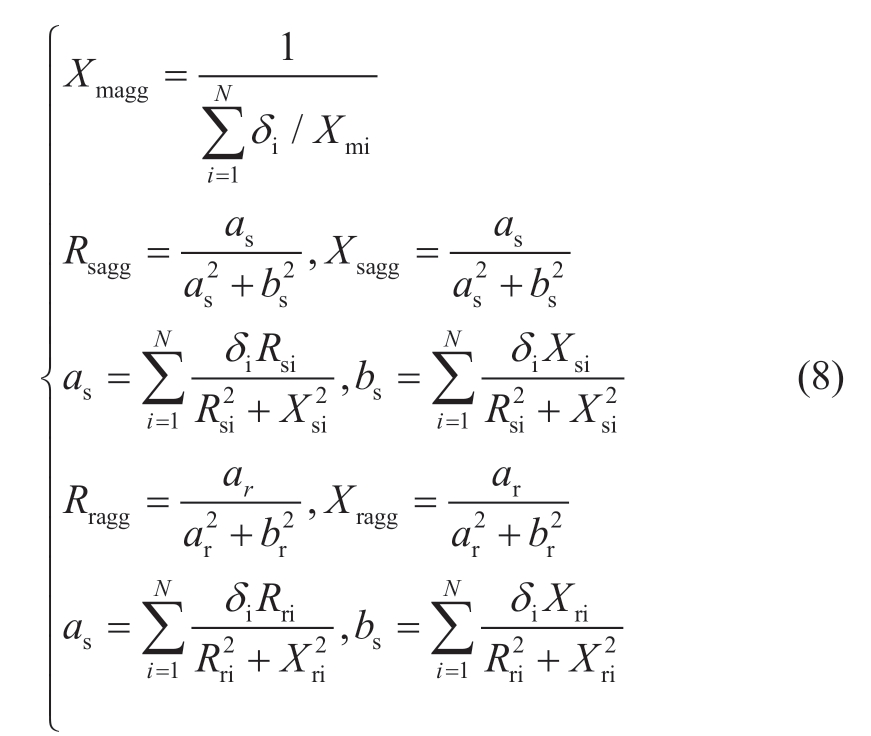
where the subscripts s and r denote the stator and rotor parameters, respectively, of the wind turbine.The equivalence principle of the wind-farm capacity and wind speed is identical to that for the capacity-weighted singlemachine equivalent method.
Compared with the former method, this method improves the capacity weight coefficient, increases the equivalence accuracy, and can more accurately reflect the dynamic and transient characteristics of high-capacity wind turbines for single-machine equivalence.
(3) Single-machine equivalent method of parameter transformation
When there are different types of wind turbines in the wind farm, the equivalent model can be achieved by using the parameter conversion equivalent method of virtual impedance for parameter calculation and inverse transformation.This method can achieve relatively high equivalent accuracy in the case of different wind-turbine parameters and can more accurately represent the parameter equivalence and internal connection of the wind turbines.
(4) Variable-scale step-down multi-machine equivalent method
In the variable-scale reduced-order multi-machine equivalent method, each row (column) of wind turbines with consistent parameters is simplified as one wind turbine in a uniformly arranged rectangular wind farm, assuming that the exhaust fans have the same wind speed and operate under identical conditions.If the wake effect is considered,the wind-turbine equivalence is conducted according to the principle of similar operating conditions.
2.2.4 Modeling of collector system
Grid-connected wind farms always use two-stage step-up systems, that is, a low voltage rating such as 10 or 35 kV is used for the power-collection system, and a higher voltage rating such as 110 or 220 kV is adopted for power transmission to a large power grid [35-38].With an increase in the unit capacity, to reduce the loss in the line,the wind farm generally uses the connection mode of one unit equipped with one transformer.Multiple wind-turbine generator units are connected to the medium-voltage bus through the chain structure and then connected to the power grid through the main transformer of the wind farm.The power-collection system is usually equivalent according to the principle of power-loss consistency; thus, the equivalent model can keep the power loss consistent with that of the original model and can keep the state voltage essentially consistent.
For large wind farms, wind turbines are usually clustered according to certain principles.A group of wind turbines is shown in Fig.3(a), and Fig.3(b) shows an equivalent circuit diagram.In Fig.3(a), Zli represents the impedance of the cable connecting the ith wind turbine, Ii represents the input current of the ith wind turbine, Zs represents the equivalent impedance of a single cluster of wind turbines, Is represents the total input current of a single cluster of wind turbines,and ZTi represents the impedance of the ith box transformer.Because wind turbines in the same cluster have identical characteristics, the Ii values of the generators in a cluster are approximately equal; i.e., I1 ≈ I2 ≈ I3 ≈ I4.

Fig.3 Equivalent diagram for a single cluster of wind turbines
The equivalent impedance of a single cluster of wind turbines is expressed as

As shown in Fig.3(a), after multiple clusters of wind turbines are connected in parallel, they are connected to the low-voltage side of the transformer station, and Fig.3(b) is an isogram.nm represents the mth wind turbine, Zsm represents the equivalent impedance of the mth wind turbine,Im represents the output current of wind-turbine cluster M, and Zp and Ip represent the equivalent impedance and total output current, respectively, of the wind farm.The equivalent impedance of multiple parallel clusters of wind turbines is given as

2.3 Standards for wind-farm modeling
2.3.1 Current situation
The large-scale development of wind power in China began in 2004.There are many types of wind turbines on the market, but their inconsistent standards and lack of functionality have led to frequent accidents during operation.To standardize wind power construction, in 2005, the Standardization Administration of China issued the guiding document “GB/T 19963-2005 Technical specification for wind farm access to power system” (GB/T 19963-2005).This standard was effective for guiding and restricting the expansion of wind power projects at the time,but the technical requirements in the early standards were relatively lax and the coverage was not comprehensive.In view of the frequent occurrence of wind-farm operation accidents and wind power transmission failures, a revised standard was released in 2011.The revised standard covers almost all aspects of the operation of wind farms, and strictly regulates the construction of wind farms and the technical performance of wind power equipment.
After the publication of GB/T 19963-2011, China successively issued a series of standards for wind farms,such as “NB/T 31075 Specifications for electrical simulation models and validation of wind farm”, “NB/T 31077 Modeling and evaluation method of wind farm low voltage ride through characteristics”, “NB/T 31099 Technical rule for reactive power configuration and voltage control of wind farm” (NB/T 31099), “NB/T 10316 Test specification for grid-connection behavior of dynamic reactive power compensation device in wind farm” (NB/T 10316), and the enterprise standard “ITIS Technical specification for modeling and verification of equivalent model of electrical simulation of wind farm” (ITIS) [27, 39, 40, 41, 42].
Each standard has a specific application scope, and the use conditions of the standard can be distinguished by establishing an equivalent model or a detailed model.Detailed models are typically used to study the gridconnection characteristics, the reactive power allocation,and other internal problems of wind farms.For example,GB/T 19963-2011 focuses on the grid-connection impact of wind farms and establishes a detailed model for wind farms.ITIS establishes a detailed model for wind farms that can be used for stability research and short-circuit calculations.NB/T 31077 establishes a detailed model based on that can be used for analyzing the low-voltage ride-through performance of wind farms.In NB/T 31075,either a detailed model or an equivalent model is adopted for power-system stability analysis.The type of model must be selected according to the research needs.
The most popular international standard for wind-farm modeling is “IEC 61400-27-2:2020 Electrical simulation models-Model validation” [43].It specifies procedures for validation of electrical simulation models for wind turbines and wind power plants, and is intended to be used in power-system and grid-stability analyses.The validation procedures are based on the tests specified in IEC 61400-21.The validation procedures are applicable to the generic models specified in IEC 61400-27-1 and to other fundamental frequency wind power plant models and windturbine models.
2.3.2 Deficiencies and future research
According to the research on wind-farm modeling,the competent department has issued numerous standards,standardized the development of the market, and promoted the progress of technology.Additionally, we identified the deficiencies of the existing standards.
(1) Numerous existing wind-farm modeling standards do not specify the applicable scenarios, which need to be selected by readers according to their own understanding.This can easily cause misunderstandings and losses.For example, to study the impact of wind-farm grid connection in an area, it is inappropriate to adopt the conventional detailed model of the wind farm.Therefore, it is necessary to clearly select a detailed model or an equivalent model for different scenarios described in the standard.
(2) Few wind-farm standards include wind-farm model verification.When the detailed model is used for research,it is typically considered that if the wind-turbine model is accurate, the detailed model of the wind farm does not need to be verified.However, in the equivalent model of the wind farm, some characteristics and parameters are ignored; thus, we must compare the detailed model and the equivalent model under the same working conditions to evaluate the reliability of the equivalent model.At present,there is no standard for data difference analysis between the two types of models.In the future, the proportion of wind power in China’s power system will increase further,and the equivalent model of wind farms must be adopted.Therefore, ensuring the reliability of the equivalent model of wind farms will be the focus of future standards.
3 Conclusions
According to the comparative analysis of different standards related to wind turbines and wind farms, the following conclusions are drawn.
Each standard has advantages and limitations.Owing to the small number of foreign wind-turbine manufacturers,there are few types of wind turbines on the market.In addition, because of the strong research and development capabilities of manufacturers, most of the experts of the standard working group come from these manufacturers,which makes it easy to establish a general simulation model for wind turbines.This not only ensures the authority of the relevant standards but also ensures that they are suitable for the market.In China’s wind power market, manufacturers with different R&D capabilities produce many types of wind turbines.Thus, it is important to establish a general model for wind-turbine type conversion through parameter adjustment and to limit the model with standards.
In this study, existing wind power-related standards were analyzed.The application scenarios and conditions of various standards were summarized, the applicability of the standards was discussed, and a clear overview of wind power standards was presented in accordance with the requirements for the rapid development of rapidly developing wind power in China.Comparative research indicated that although China’s early wind power-related standards refer to international standards, the provisions of China’s current wind power standards do not lag behind international standards and are at a comparable level; thus,they satisfy the technical requirements for China’s largescale wind power development.The formulation and implementation of wind power standards will ensure the safe and stable operation of China’s power grid with largescale wind power development.
The proposed technical regulations will consider the development of wind power equipment manufacturing technology in China and provide necessary guidance for the technical development of domestic wind turbines.
Acknowledgements
This work was supported in part by the Joint Research Fund in Smart Grid (U1966208) under a cooperative agreement between the National Natural Science Foundation of China (NSFC) and State Grid Corporation of China(SGCC).
Declaration of Competing Interest
We declare that we have no conflict of interest.
References
[1] Transcript of online press conference of the National Energy Administration in the fourth quarter of 2021 (2021) In: National Energy Administration.Available via DIALOG.http://www.nea.gov.cn.Accessed 18 Nov 2021
[2] Tang L, Shen C, Zhang X M (2015) Impact of large-scale wind power centralized integration on transient angle stability of power systems-part I: Theoretical Foundation.Proceedings of the CSEE,35(16): 4043-4051
[3] Tang L, Shen C, Zhang X M (2015) Impact of large-scale wind power centralized integration on transient angle stability of power systems-part Ⅱ: Factors affecting transient angle stability.Proceedings of the CSEE, 35(15):3832-3842
[4] Chi Y N, Zhang Z K, Li Y, et al.(2017) Development of largescale wind power grid integration and technical standard.North China Electric Power 03:1-7
[5] Zhang L, Zhu L Z, Jiang D J, et al.(2016) Modelling approach and implementation of direct-drive wind turbine.Power System Technology, 40(11):3474-3481
[6] Honrubia-Escribano A, Jiménez-Buendía F, Gómez-Lázaro E,et al.(2016) Validation of generic models for variable speed operation wind turbines following the recent guidelines issued by IEC 61400-27.Energies, 9(12): 1048
[7] Chen W H, Wang L, Tan L N, et al.(2017) Recent progress of developing WECC generic models of wind turbine generators/pants for dynamic simulation.Proceedings of the CSEE, 37(03):738-751
[8] WECC Renewable Energy Modeling Task Force (2010) WECC wind power plant dynamic modeling guide.EPRI, USA
[9] Ellis A, Kazachkov Y, Muljadi E, et al.(2011) Description and technical specifications for generic WTG models-A status report.Paper pressed at the 2011 IEEE/PES Power Systems Conference and Exposition, Phoenix, AZ, USA, 20-23 March 2011
[10] Asmine M, Brochu J, Fortmann J, et al.(2011) Model Validation for Wind Turbine Generator Models.IEEE Transactions on Power Systems, 26(3): 1769-1782
[11] Pourbeik P, Akhmatov V, Akiyama Y, et al.(2007) Modeling and dynamic behavior of wind generation as it relates to power system control and dynamic performance.Paris, France
[12] Zhou Y H, Zhao L, Lee W J (2018) Robustness analysis of dynamic equivalent model of DFIG wind farm for stability study.IEEE Transactions on Industry Applications, 54(6):5682-5690
[13] Zhang L, Zhu L Z, Jiang D J, et al.(2016) Modelling approach and implementation of direct-drive wind turbine.Power System Technology, 40(11):3474-3481
[14] Standardization Administration (2015) NB/T 31066-2015,Guideline for electrical simulation models of wind turbines
[15] Wu M J (2018) Modeling and simulation of PMSM vector control system.Dissertation, Zhengzhou University
[16] Jia Q (2021) Equivalent modeling of wind farm and study on subsynchronous oscillation characteristics of grid connected system.Dissertation, School of Electric Engineering
[17] Su X W (2010) Research on dynamic equivalent modeling of wind farms.Dissertation, School of Electrical and Electronic Engineering
[18] Tang B J (2020) Research on the mechanism and mitigation strategies of sub-synchronous oscillation in DFIG-based wind power integration system.Dissertation, China Electric Power Research Institute
[19] Liu X L (2017) Research on vector control theory, simulation,experiment and application based on mathematic model of PMSM.Dissertation, Hefei University of Technology
[20] International Electrotechnical Commission (2008) IEC 61400-21:2008 Measurement and assessment of power quality characteristics of grid connected wind turbines
[21] International Electrotechnical Commission (2008) IEC 61400-27-1:2015 Wind turbines-Part 27-1:Electrical simulation models-Wind turbines
[22] International Electrotechnical Commission (2008) IEC 61400-27-1:2020 Wind turbines-Part 27-1:Electrical simulation models-Generic models
[23] International Electrotechnical Commission (2008) IEC 61400-21-1:2019 Wind energy generation systems-Part 21-1: Measurement and assessment of electrical characteristic-Wind turbines
[24] Standardization Administration (2014) NB/T 31053-2014,Modelling and validation method if wind turbine low voltage ride through characteristics
[25] Standardization Administration (2017) NB/T 31111-2017, Test procedure of wind turbine high voltage ride through capability
[26] Standardization Administration (2018) GB/T 36237-2018 Wind turbines-electrical simulation models
[27] Standardization Administration (2011) GB/T 19963-2011,Technical rule for connecting wind farm to power system
[28] Mu P T, Zhao D M, Wang J C (2017) Mechanism analysis of the influence of large-scale wind power integration on system power angle stability.Proceedings of the CSEE, 37(05):1325-1334
[29] Wang P, Zhang Z Y, Huang Q, et al.(2018) Improved wind farm aggregated modeling method for large-scale power system stability studies.IEEE Transactions on Power Systems, 33(6):6332-6342
[30] Gu T Z, Yang Q J, Lin C H, et al.(2020) Wind farm equivalent modeling method based on single-machine equivalent and selective modal analysis.Power System Protection and Control,48(01):102-111
[31] Su K W, Zhang Y M, Hu W F (2020) Research on equivalent modeling method of wind power plant based on parameter measurement.Electrical Measurement and Instrumentation,57(18):29-35
[32] Su X W, Mi Z Q, Wang Y (2010) Research on the applicability and improvement of common equivalent methods in wind farms.Power System Technology, 34(06):175-180
[33] Zhu Q L, Qi M (2020) Summary of research on accuracy evaluation of wind farm equivalent model.Power Capacitor and Reactive Power Compensation, 41(06):180-184+190
[34] Zhou Y H, Zhao L, Lee W J (2018) Robustness analysis of dynamic equivalent model of DFIG wind farm for stability study.IEEE Transactions on Industry Applications, 54(6):5682-5690
[35] Sun C Q, Pan X P, Pan S Y (2020) Structural analysis and parameter identification of equivalent model of wind farm collection network.Power Automation Equipment, 40(10):85-91
[36] Mohammed, Y, Morgan, et al.(2018) Wind farm dynamic models assessment under weak grid conditions.IET Renewable Power Generation, 12(12): 1325-1334
[37] Ren Z J, Guo H X (2019) Equivalent modeling and verification analysis of wind farm based on RTDS.Water Resources and Power, 37(07):196-199+125
[38] Liu H J, Pan W X, Zhang C C, et al.(2015) Simulation research on equivalent model of wind farm collector network.Electrical Measurement & Instrumentation, 52(13):31-34+47
[39] Standardization Administration (2016) NB/T 31075-2016,Specifications for electrical simulation models and validation of wind farm
[40] Standardization Administration (2016) NB/T 31077-2016,Modelling and evaluation method of wind farm low voltage ride through characteristic
[41] Standardization Administration (2016) NB/T 31099-2016,Technical rule for reactive power configuration and voltage control of wind farm
[42] Standardization Administration (2019) NB/T 10316-2019 Test specification for grid connectin behaviour of dynamic reactive power compension device in wind farm
[43] Feng Z M, Sun G Q, Teng D H, et al.(2021) Reviews of LVRT technology for D-PMSG Electric Power Engineering Technology,40(2): 75-85
[44] Wang P, Zhang Z Y, Huang Q, et al.(2018) Improved wind farm aggregated modeling method for large-scale power system stability studies.IEEE Transactions on Power Systems, 33(6):6332-6342
[45] Lu Y T, Zhao T L, Du H J (2020) A coordination control strategy of integrated wind farm low voltage ride-through based on VSCHVDC.Electric Power Engineering Technology, 39(3):30-35
[46] Zhou Y H, Zhao L, Lee W J (2018) Robustness analysis of dynamic equivalent model of DFIG wind farm for stability study.IEEE Transactions on Industry Applications, 54(6):5682-5690
[47] Wang G D, Lu S F, Zhang X J, et al.(2020) An improved control strategy for wind farm with VSC-HVDC under unbalanced voltage.Electric Power Engineering Technology, 39(1):44-50
[48] Sun C Q, Pan X P, Pan S Y (2020) Structural analysis and parameter identification of equivalent model of wind farm collection network.Power Automation Equipment, 40(10):85-91
[49] Ke X B, Qie Z H, Huo C, et al.(2021) Design of a wind power and photovoltaic emergency power control system for Northwest China Grid.Electric Power Engineering Technology, 40(2):39-45
[50] Fan Y W, Chi Y N, Li Y, et al.(2021) Key technologies for medium and low voltage DC distribution system.Global Energy Interconnection, 4(1): 91-103
[51] Wang L, Gai C Y, Wang H (2021) Dynamic equivalent modeling of direct drive wind farm based on improved D-K clustering algorithm.Acta Solar Energy, 42(03):48-55
[52] Dong W K, Du W J, Wang H F (2021) Dynamic equivalent model of grid-connected wind farm used for oscillation stability analysis.Proceedings of the CSEE, 41(01):75-87+399
[53] An Z, Shi C, Zheng T Z, et al.(2018) Evaluation method of equivalent model for direct-drive wind turbine wind farm considering the randomness of wind power.Proceedings of the CSEE, 38(22):6511-6520
[54] Jiménez-Buendía F, Villena-Ruiz R, Honrubia-Escribano A, et al.(2019) Submission of a WECC DFIG wind turbine model to Spanish operation procedure 12.3.Energies, 12(19): 3749
Received: 19 November 2021/ Accepted: 22 February 2022/ Published:25 April 2022
Cong Wang
w1120566581@163.com
Yan Li
liyan@epri.sgcc.com.cn
Yiwen Fan
18810263095@163.com
Yongning Chi
chiyn@epri.sgcc.com.cn
Hongchang Qi
qhc13208109137@163.com
Hongzhi Liu
liuhongzhi@epri.sgcc.com.cn
2096-5117/© 2022 Global Energy Interconnection Development and Cooperation Organization.Production and hosting by Elsevier B.V.on behalf of KeAi Communications Co., Ltd.This is an open access article under the CC BY-NC-ND license (http: //creativecommons.org/licenses/by-nc-nd/4.0/ ).
Biographies

Cong Wang received her bachelor degree at Liaoning Petrochemical University in 2019,and she is pursuing her master degree at China Electric Power Research Institute.Her main research interests include Wind turbines participate in system voltage regulation.
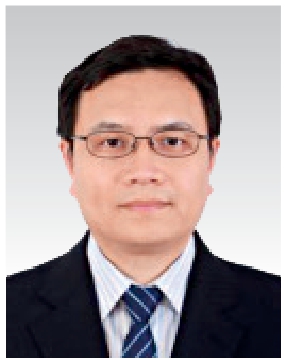
Yan Li received his bachelor degree from Shandong University of Technology in 1999,master degree from Fuzhou University in 2002, and Ph.D.degree from China Electric Power Research Institute (CEPRI) in 2007,respectively.Since 2007 he has been working at CEPRI, currently as the Renewable Energy Integration Modeling and Simulation Research Division Director of Renewable Research Division Director of Renewable Energy Department of CEPRI.His research areas are power system analysis, renewable energy modeling and grid integration simulation, renewable energy develop planning.

Yiwen Fan received her bachelor degree at Northeast Electric Power University in 2017,master degree from Beijing Jiaotong University in 2019, and she is pursuing her Ph.D.degree at China Electric Power Research Institute.Her main research interests include medium and low voltage DC distribution system.

Yongning Chi received his B.E.and M.E.degrees in Electrical Engineering from Shandong University, China, in 1995, and 2002, respectively, and his Ph.D.degree in Electrical Engineering from China Electric Power Research Institute, China, in 2006.Since 2003, he has been employed at China Electric Power Research Institute, Beijing,China, where he is the chief engineer for the Renewable Energy Department.His research interests include modeling, control and integration analysis of renewable energy generation.
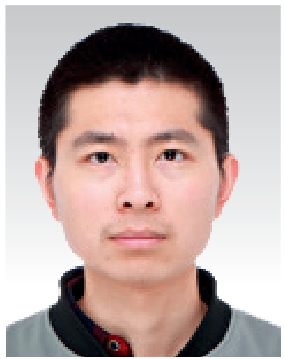
Hongchang Qi received his bachelor degree at Southwest Petroleum University in 2021,and he is pursuing his master degree at China Electric Power Research Institute.His main research interests include Wind turbines participate in system frequency regulation.

Hongzhi Liu received his B.S.degree from Taiyuan University of Technology, in 2000,and received his M.S.degree Northwestern Polytechnical University, in 2004 and the PhD degree from Aalborg University, Aalborg,Denmark in 2014.He is working in China Electric Power Research Institute, Beijing, P.R.China.His main research interests include renewable energy integration and HVDC transmission.
(Editor Dawei Wang)
